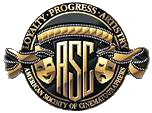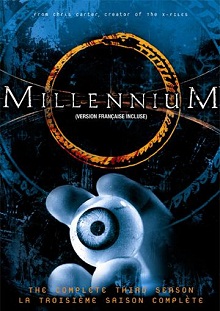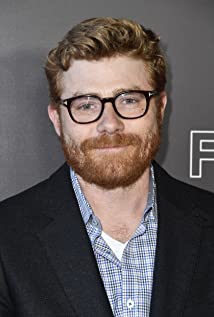
Andrew Lesnie ACS ASC was an Australian cinematographer. He was best known as the cinematographer for The Lord of the Rings trilogy (2001–2003) and its prequel The Hobbit trilogy (2012–2014), both directed by New Zealand director Peter Jackson. He received the Academy Award for Best Cinematography for his work on The Lord of the Rings: The Fellowship of the Ring in 2002.

The American Society of Cinematographers (ASC), founded in Hollywood in 1919, is a cultural, educational, and professional organization that is neither a labor union nor a guild. The society was organized to advance the science and art of cinematography and gather a wide range of cinematographers to discuss techniques and ideas and to advocate for motion pictures as a type of art form. Currently, the president of the ASC is Stephen Lighthill.
Russell Stewart Boyd,, ACS, ASC, is an Australian cinematographer. He rose to prominence with his highly praised work on Picnic at Hanging Rock (1975), the first of several collaborations with director Peter Weir. Boyd is a member of both the Australian Cinematographers Society since 1975 and the American Society of Cinematographers since 2004.

Richard Leiterman was a Canadian cinematographer, best known for documentary and feature film work in the 1960s and 1970s. His cinéma vérité, or direct camera, style helped define Canadian cinema at the time.
Russell Paul Carpenter, ASC is an American cinematographer and photographer, known for collaborating with directors James Cameron, Robert Luketic and McG. He won the Academy Award for Best Cinematography for the 1997 Best Picture-winning film Titanic. Much of his work has been in blockbuster films, including Hard Target (1993), True Lies (1994), Charlie's Angels (2000) and its sequel Charlie's Angels: Full Throttle (2003), Ant-Man (2015) and XXX: Return of Xander Cage (2017). His documentary cinematography includes George Harrison: Living in the Material World, directed by Martin Scorsese. It earned six nominations at the 64th Primetime Emmy Awards, including Outstanding Cinematography for Nonfiction Programming for the cinematography team.
Walter C. Pfister is an American director and former cinematographer, who is best known for his work with filmmaker Christopher Nolan. Some of his collaborations with Nolan include Memento (2000), The Dark Knight Trilogy (2005–2012), and Inception (2010). For his work on Inception, Pfister won an Academy Award for Best Cinematography and received a BAFTA Award nomination.
Dean Semler ACS ASC is an Australian cinematographer and film director. Over his career, he has worked as a cinematographer, camera operator, director, second unit director, and assistant director. He is a three-time recipient of the AACTA Award for Best Cinematography and an Academy Award winner. He is a member of both the Australian Cinematographers Society (ACS) and the American Society of Cinematographers (ASC). In 2002 he was appointed a Member of the Order of Australia (AM).

Guillermo Jorge Navarro Solares, AMC, ASC is a Mexican cinematographer and television director. He has worked in Hollywood since 1994 and is a frequent collaborator of Guillermo del Toro and Robert Rodriguez. In 2007, he won the Academy Award for Best Cinematography and the Goya Award for Best Cinematography for del Toro's Pan's Labyrinth. His subsequent filmography runs the gamut from lower-budget arthouse and genre films to high-profile blockbusters like Hellboy, Zathura: A Space Adventure, Night at the Museum, and Pacific Rim.
The 13th American Society of Cinematographers Awards were held on February 21, 1999, honoring the best cinematographers of film and television in 1998.

The third season of the serial crime-thriller television series Millennium commenced airing in the United States on October 2, 1998, and concluded on May 21, 1999 after airing twenty-two episodes. It tells the story of retired FBI Agent Frank Black. Black had previously worked for a private investigative organization, the Millennium Group, but left after the Group unleashed a virus that resulted in the death of Black's wife. Now working for the Federal Bureau of Investigation with agent Emma Hollis, Black seeks to discredit and expose the Group for their sinister motives.
The 28th American Society of Cinematographers Awards were held on February 1, 2014, at the Hollywood & Highland Ray Dolby Ballroom, honoring the best cinematographers of film and television in 2013.
Fabian Wagner is a German cinematographer. His roles in the production of the television shows Sherlock and Game of Thrones have earned him two Creative Arts Emmy Award nominations. In 2017 and 2020 respectively, he won the American Society of Cinematographers Award for Outstanding Achievement in Cinematography in Regular Series for his work on the Game of Thrones episode "Battle of the Bastards" and for his work on season 3 of The Crown.
The 31st American Society of Cinematographers Awards were held on February 4, 2017, at the Hollywood & Highland Ray Dolby Ballroom, honoring the best cinematographers of film and television in 2016.
Jonathan Freeman, ASC is a Canadian cinematographer. A multi-award-winning director of photography for motion pictures, television and commercials, he is known for his work on Game of Thrones and Boardwalk Empire. Freeman's motion picture credits include Remember Me, Fifty Dead Men Walking, The Edge of Love, Hollywoodland and The Prize Winner of Defiance, Ohio. He frequently collaborates with directors Allen Coulter, Ernest Dickerson, David Nutter, and Russell Mulcahy.
The 32nd American Society of Cinematographers Awards were held on February 17, 2018, at the Hollywood & Highland Ray Dolby Ballroom, honoring the best cinematographers of film and television in 2017.
Luis Gabriel Beristáin, ASC, BSC, AMC is a Mexican cinematographer, producer, and television director known for his work on numerous well-known films including The Distinguished Gentleman, The Spanish Prisoner, Blade II, and Street Kings, and several entries in the Marvel Cinematic Universe including the Agent Carter television series.
Polly Morgan is a British cinematographer who has worked on the studio feature films Lucy in the Sky (2019), A Quiet Place Part II (2020), Where the Crawdads Sing (2022), and The Woman King (2022). She was also the cinematographer for multiple episodes of the TV series Legion (2017–2019). Morgan is accredited by the British Society of Cinematographers (BSC) and the American Society of Cinematographers (ASC). To date, she is the only woman to be a member of both, and she is the youngest member of ASC.

Erik Messerschmidt, ASC is an American cinematographer. He is best known for his collaborations with director David Fincher on the films Mank and Gone Girl, and on the Netflix series Mindhunter. He has also shot episodes of the TV series Fargo, Legion, and Raised by Wolves. His work has been nominated for an Emmy. In April 2021, he won the top ASC Award and the Academy Award for Best Cinematography for Mank.






